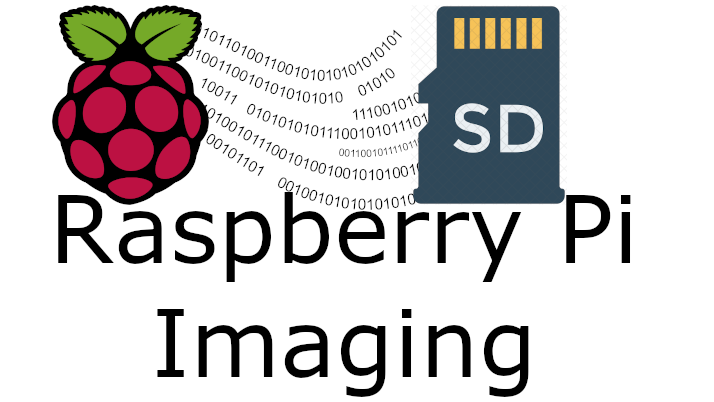Raspberry Pi Imaging

Creating and writing a Raspberry Pi image to and from an SD card
Creating an image from an SD card
Mac and Linux command line
-
Use the following
diskutilcommand to display the available disks on the system. This should display a list of disks, labeled as/dev/diskn. Note: The following examples use/dev/disk2.diskutil list -
Use the
ddcommand and thegzipcommand to create a zip file of the image.Mac
sudo dd if=/dev/disk2 | gzip > ~/path/to/disk/image.img.gzNote: Mac does not have a status parameter like linux but you can check the progress with
Ctrl+TLinux
sudo dd bs=4M if=/dev/disk2 status=progress | gzip > ~/path/to/disk/image.img.gz -
Once the image has finished writting, eject the disk
sudo diskutil eject /dev/disk2
Windows - Win32 Disk Imager
Win32 Disk Imager is the preferred tool for writing an image to an SD card.
- Choose a name and location for the image using the folder icon for the
Image Filefield. - Select the device letter of the SD card in the
devicefield the filename - Press
Read
Writing an image to an SD card
Balena Etcher - Mac, Linux, and Windows
Balena Etcher is a simple SD card flasher for writing images.
- Click
Select Imageand select the disk image file to write to the SD card - Click
Select Driveif available orChangeif the wrong SD card is selected and select the correct one. -
Click
Flashto start the image writing processEtcher defaults to automatically unmounting the drive or SD card after the image been successfully burned and written to the target volume, so keep that in mind if you go looking around in the Finder or elsewhere for a mounted image, it won’t be there. And yes, you can turn that off in Etcher app settings if need be.
Command line - Mac and Linux
-
Use the following
diskutilcommand to display the available disks on the system. This should display a list of disks, labeled as/dev/diskn. Note: The following examples use/dev/disk2.diskutil list -
In order to write to the disk, it needs to first be unmounted.
sudo diskutil unmountDisk /dev/disk2 -
Unzip the image using
gzipand write it to the disk using theddcommand as demonstrated in the following command.Mac
gzip -dc ~/path/to/image/image.img.gz | sudo dd of=/dev/disk2Note: Mac does not have a status parameter like linux but you can check the progress with
Ctrl+TLinux
gzip -dc ~/path/to/image/image.img.gz | sudo dd bs=4M of=/dev/disk2 status=progress -
Once the image has finished writting, eject the disk
sudo diskutil eject /dev/disk2
Win32 Disk Imager - Windows
Win32 Disk Imager is another tool for writing an image to an SD card.
- Choose the image location using the folder icon for the
Image Filefield. - Select the device letter of the SD card in the
devicefield the filename - Press
Write